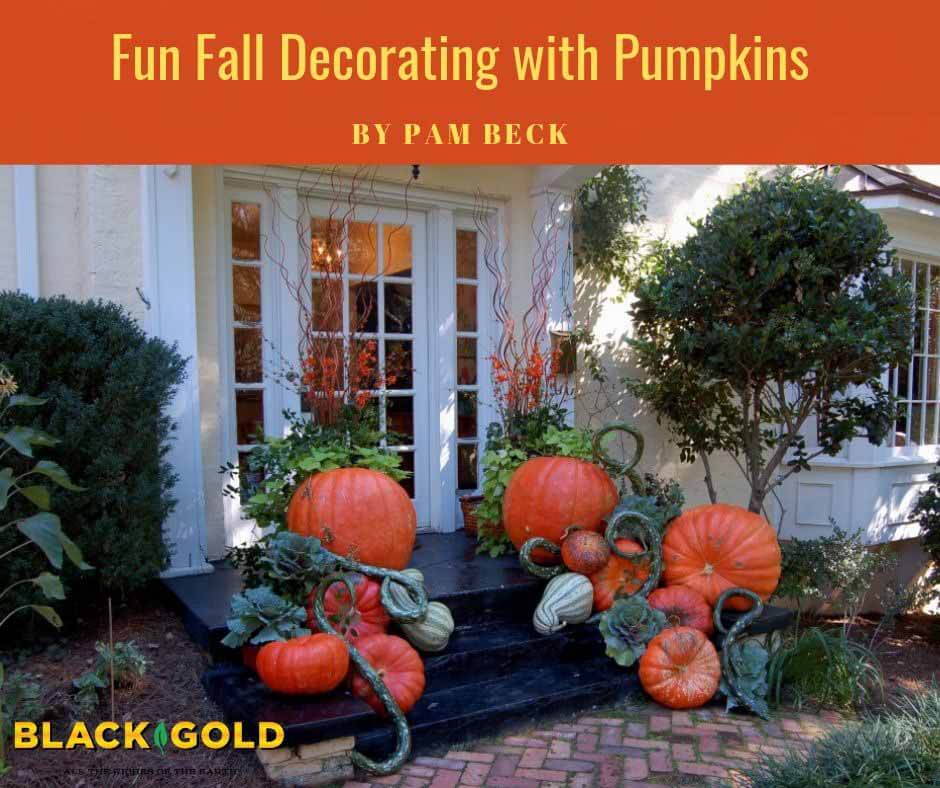
Once upon a time, pumpkins only appeared briefly as round, orange Jack-o’-lanterns for Halloween night, as the tasty main ingredient in a traditional pie at Thanksgiving, or were mentioned in passing as a potential means of transportation and affordable housing in children’s fairy tales. Today, however, pumpkins have quickly transformed into the hottest decorating item for fall.
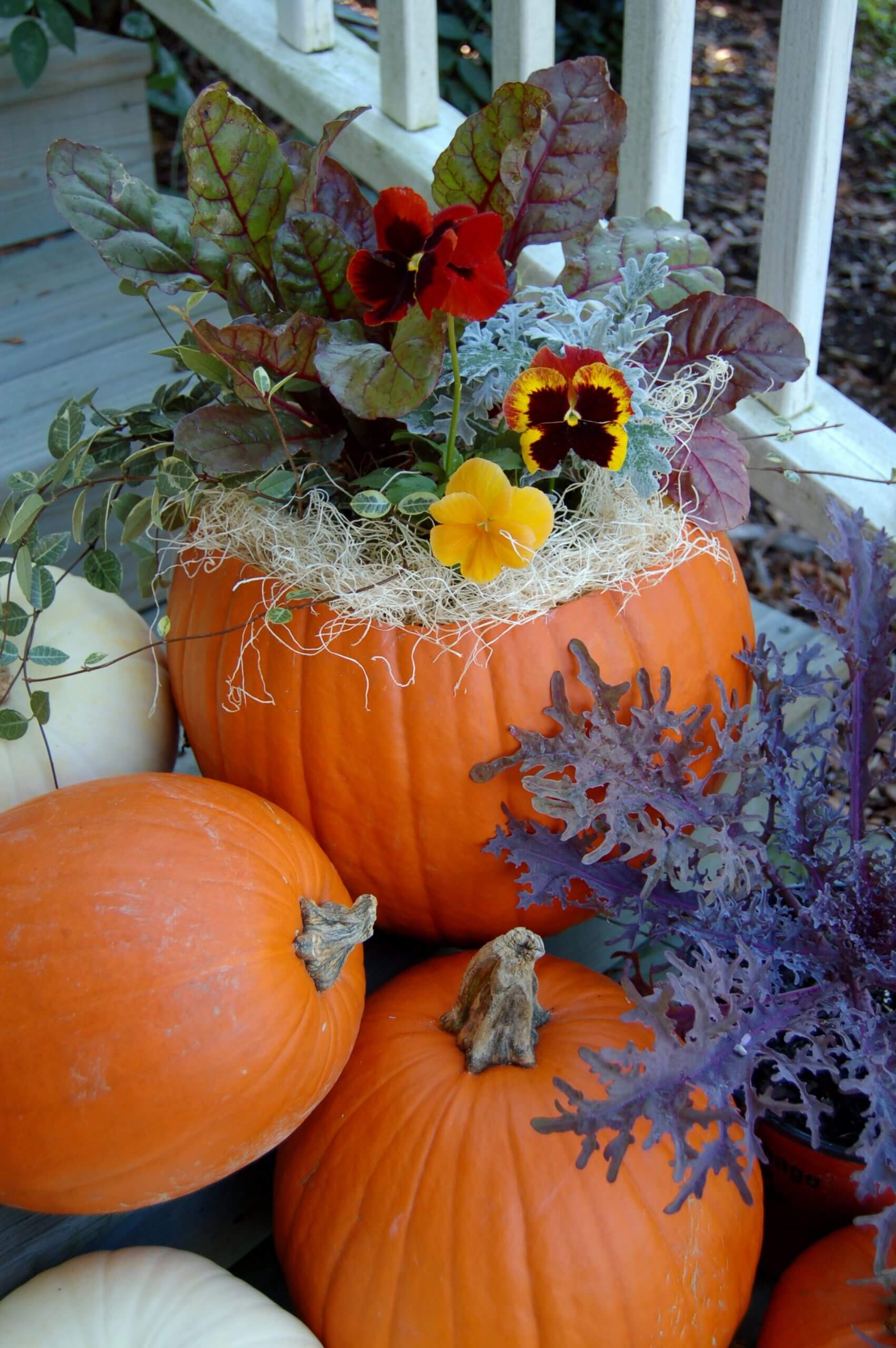
Not bad for a native New World fruit (no, a pumpkin isn’t a vegetable). Pumpkins, Cucurbita pepo, and C. maxima, are members of the squash family, which includes juicy cucumbers, loofah sponges, tough-skinned winter squash, and gourds.
Carved Pumpkins
The reason for the pumpkin’s surge in popularity is its good looks and long durability, potentially lasting weeks in outdoor arrangements thanks to its colorful hardened outer skin – if it has been cured correctly. This amazing resilience, plus the wide variety of sizes, shapes, and colors now being grown for both crafters and foodies, provides homeowners and professional designers with quite a bit of inspiration.
For those who love the time-honored ritual of carving a pumpkin, there are carving kits complete with specific tools and traceable patterns, and many how-to videos will help you create something more dramatic than the simple triangular eyes and noses of the grinning jack-o’-lanterns of yesterday.
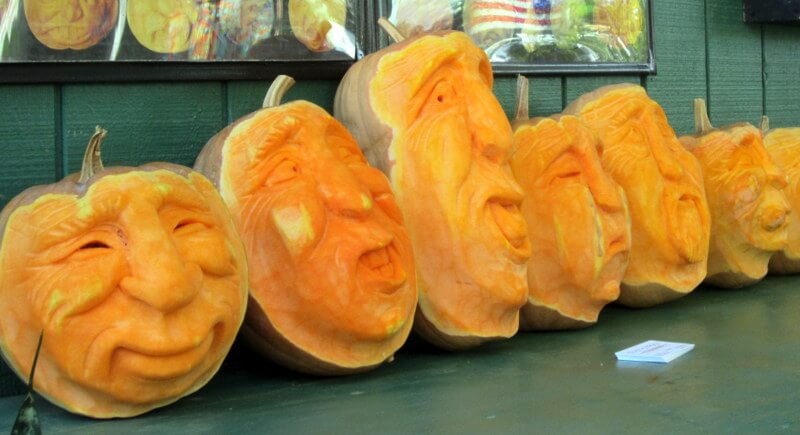
Painted Pumpkins
If you have a really steady hand, a pale three-dimensional face can be artistically carved into a pumpkin. Though removing the outer skin may cause the pumpkin to deteriorate more quickly, the inner flesh is firm enough to hold up for several days to a week if outdoor temperatures are cool and you keep your work of art out of direct sunlight. Part of the fun, however, may be watching your sculpture transform into something really ghoulish as it disintegrates.
Painting pumpkins has become a recent popular trend. You can spray paint them solid black, white, or even gild them in gold, silver, and bronze to match your other porch embellishment. Stenciling designs, university logos, and your house numbers with acrylic paint onto a pumpkin should last awhile, as the pumpkin’s outer shell hasn’t been compromised. Having your children or grandchildren paint faces on several smaller pumpkins, rather than carve them, is another great way to enjoy their precious creations a little longer, too.
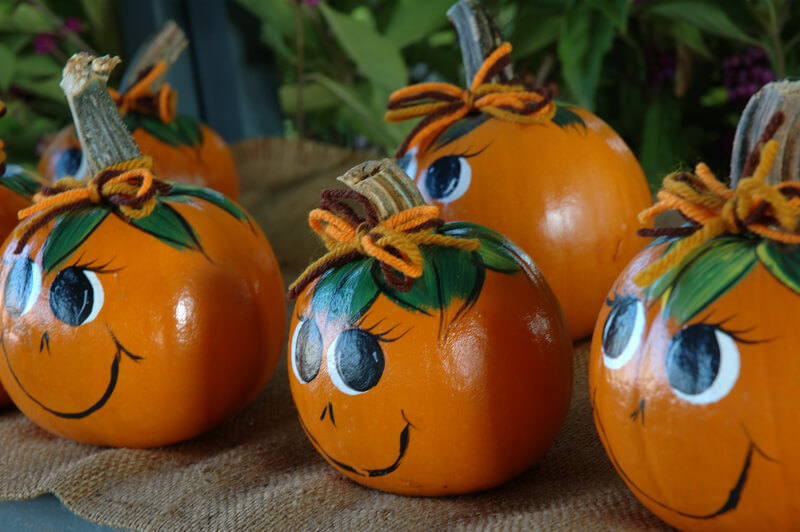
Small painted pumpkin faces for sale at the North Carolina State Farmer’s Market in Raleigh, NC. Pumpkins can also be utilized as containers. Cutting off the top, then scooping out the seeds and most of the inner flesh provides a temporary seasonal pot for mums and pansies. Remember that if you plant directly into the fruit, moisture in the potting medium could cause the pumpkin to rot quickly; but, if you simply set an already potted plant into the open shell, it may hold up better.
Choosing Varieties
Since there are so many varieties of pumpkins on the market, grouping them in natural arrangements is another way to showcase your front door for fall. Whether you simply line pumpkins up the stairs or assemble them around your threshold, their size, shape, and color will certainly make a spectacular statement.
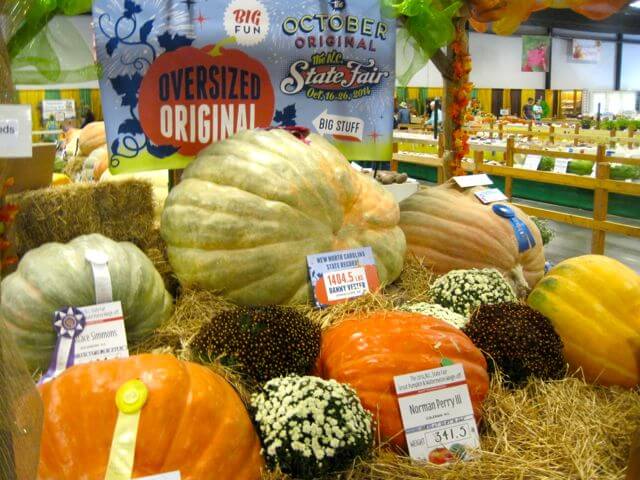
For more inspiration, visit your local farmer’s markets, botanical gardens, and zoos where grand displays of pumpkins are popping up everywhere. If you want to try your hand at growing your own pumpkins for next fall, here are a few growing tips:
Growing Pumpkins
Pumpkins need a long growing season, often requiring over 100 growing days to transform from flattened seed to fully mature vines, producing thick-skinned fruits to cut for display.
They also require full, direct sun, and they need lots of room to sprawl, with vines easily covering an area 20-feet across. Pumpkins don’t like cold soil, so direct plant seed once the soil temps are closer to 70-75 degrees F.
Starting seed indoors can be tricky, as pumpkin seed germinates quickly and seedlings get leggy fast, so they are difficult to transplant with success.
The reasons pumpkins are traditionally planted on a hill is that mounded soil heats up quickly and drains well. Black Gold® Garden Soil would be a good choice for creating these raised planting areas in the home garden.
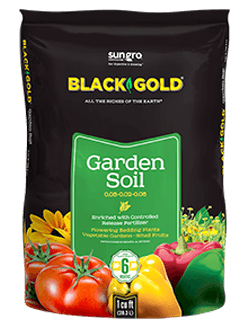 Pumpkins are greedy feeders, needing additional fertilizer and supplemental watering in droughty summers. Here is another reason why incorporating Black Gold® Garden Soil into the planting area would provide essential organic matter to hold moisture, while at the same time helping feed these hungry plants for up to six months.
Pumpkins are greedy feeders, needing additional fertilizer and supplemental watering in droughty summers. Here is another reason why incorporating Black Gold® Garden Soil into the planting area would provide essential organic matter to hold moisture, while at the same time helping feed these hungry plants for up to six months.
When watering your pumpkin patch, try to keep water off of the foliage to help prevent foliar diseases, instead deliver it down to the roots where it is needed. Soaker hoses are perfect for this.
Harvesting Pumpkins
The deep color change is a pretty good indicator that your pumpkins are getting ready to harvest. Another indicator is that their supporting vines begin to turn brown, but the best test is when you can no longer easily puncture the outer skin of a pumpkin with your fingernail. (Some pumpkins are more soft-skinned, but overall this is a good test.)
You may find that you are developing impatience to pick and enjoy your pumpkin crop, feeling much like Linus waiting for the Great Pumpkin in the Peanuts comic strip, but resist the temptation to cut them too early. Pumpkins last much longer when harvested after they are fully mature. Then you will be able to enjoy them longer for all of your fall decorating needs.

